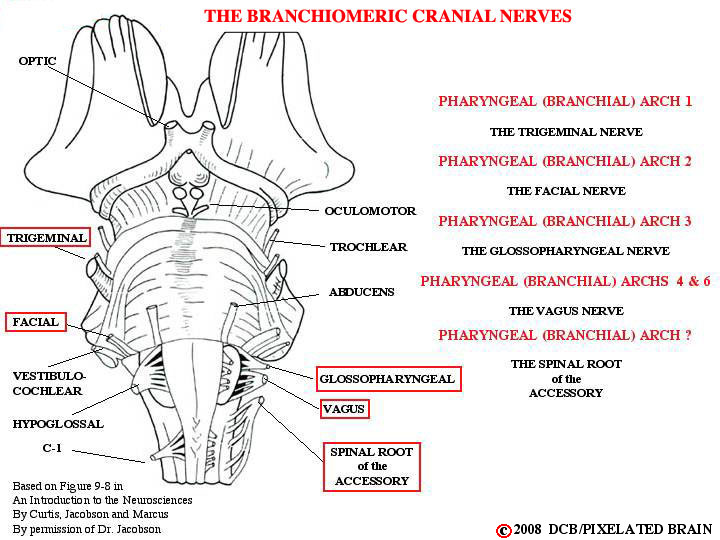
PIXBRAIN HOME _ _ MOD 8 HOME _ _ previous _ _ FIGURE 8-2_ _ next _ _ I WANT TO
If the concept of branchial arches is new to you, see arch 1 for a summary. The fifth arch exists only briefly during development, and since no permanent structures are derived from it, we ignore its brief existence. There is a debate about the classification of the spinal root of the accessory nerve as a branchiomeric one, because there is no seventh arch. We discuss the arguments pro and con when we consider the nerve in more detail in Figure 8-13.
When we first treated cranial nerves in Module 2, we told you - in Fig. 2-14 - not to worry about the details. We said we'd do that in Modules 8 and 9. Well, Module 8 is here and the time for details has come. For starters, look at Figure 1-5 and - for the 5 cranial nerves listed above - make certain you can draw a circle around the opening through which the nerve passes to exit from the skull. If you need help, consult Blumenfeld's Table 12.2.
This view gives us a chance to drive home one of the points made in the preceding view. In your mind, try to draw in the descending pyramidal tract on this view. Note that it passes close to three cranial nerves - the oculomotor, the abducens and the hypoglossal. These relationships give rise to three clinical syndromes - the so - called "alternating hemiplegias". In each case the motor loss is on the contralateral side of the body, and it is associated with an ipsilateral impairment in cranial nerve function.